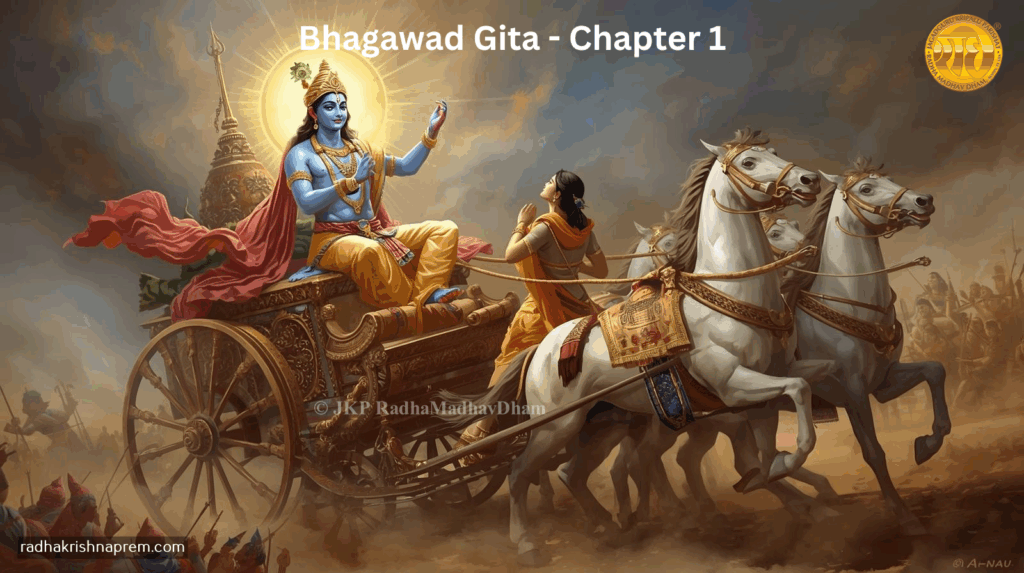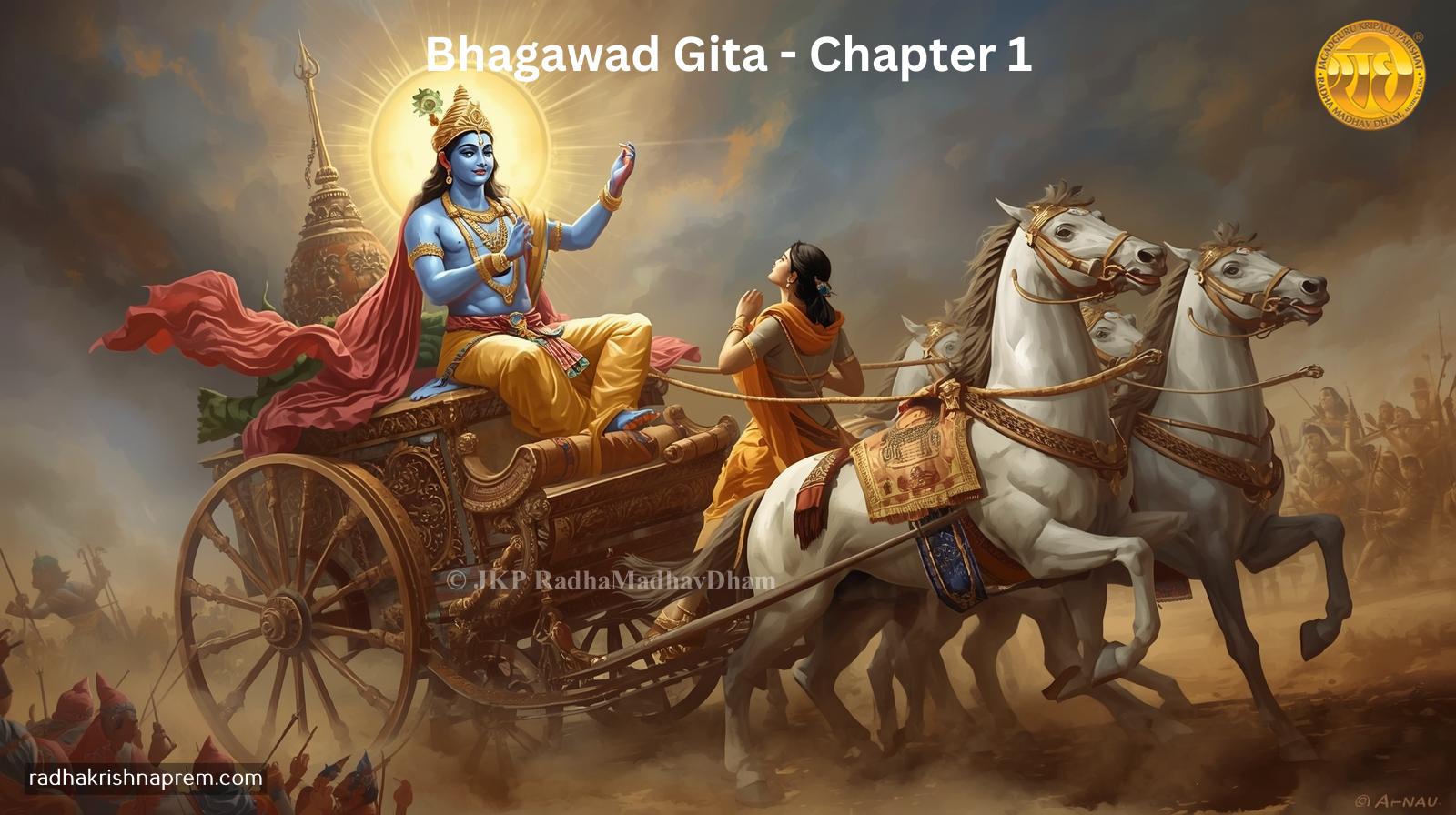
The Bhagavad Gita was said by Shri Krishna to Arjuna on the battlefield in Kurukshetra more than 5,000 years ago, just before the war was about to begin.
In Sanatan Dharma everything is based on the Vedas. Whatever is written in any other scripture, whether it be the Gita, the Puranas, the Ramayana or any other scripture, it’s all based on what’s said in the Vedas. The Veda is the foundation for all the knowledge of Sanatan Dharma.
Ved originally has 100,000 mantras. The Ved is produced by Bhagavan himself in this world. It says ‘Nishvasitamasya Veda’ — before the universe was manifested, God outwardly manifested the Vedas which were held within Him in a subtle form. The knowledge of the Ved is a Divine power which exists eternally within God. Ved is also called apauruseya — it is not made by anybody — and pauruseya because it was outwardly produced by God Himself.
In the Bhagavatam Shri Krishna says to Uddhava that He gives the knowledge of the Vedas to Brahma, who then gives it to the Rishis. Even if the books are lost, the Ved is never lost. It is eternal knowledge about God and how to find God.
It is said that if the Upanishads are cows, Krishna milked those cows and the milk is the Gita. The essence of Ved is in the Upanishads and the essence of all Upanishads was condensed by Krishna into only 700 verses in the Gita instead of 100,000 mantras in the Ved. That is why the Gita is called Brahma Vidya Shastra — the knowledge of God.
But Shri Krishna also explained to Uddhava that because people have different types of mentality — sattvic, rajas or tamas — they interpret the Vedas in sattvic, rajas or tamas ways, and all such interpretations are wrong because the Ved is Divine. The Ved itself says one needs the help of a God-realized saint to understand its true meaning: ‘Ācāryavān puruṣo hi veda.’ Thus the Kathopanishad says, ‘O humans, arise, awake, and receive the true knowledge of God by going to a saint who has attained God.’ A God-realized Guru alone can give that true understanding.
It is also emphasized that memorizing or studying the Gita does not give knowledge of God because pride creates distance from surrender. Throughout each chapter Krishna is preaching surrender, and surrender comes only from humbleness. Kunti once asked Krishna for misfortune and hardship at every step of life so that she might remain destitute and humble and thus attain Him. Even if we have wealth, beauty or power, before God we should feel humble and destitute. So the goal is not theoretical knowledge but actual surrender to Shri Krishna.
The Gita ends when Arjuna finally surrenders and says, “Whatever You want, I’ll do it.” If he had said that at the beginning there would have been no Gita. Because he was not fully surrendered, Krishna had to teach eighteen chapters to bring him to that point. The whole purpose of the Gita was to help Arjuna develop complete surrender. Krishna’s final teaching is: ‘Sarva-dharman parityajya mamekam sharanam vraja Aham tvam sarva papebhyo mokchayishyamimashucha – surrender to Me alone and I will liberate you from all sins.’ So the Gita is Brahma Vidya, the knowledge of God, but simply by reading it one cannot know God; one must follow its teachings and through Krishna’s grace become surrendered.
The scene of the Gita was the battlefield of Kurukshetra where millions of warriors stood ready to fight. Arjuna asked Krishna, his charioteer, to place his chariot between the two armies. Seeing his relatives, teachers and elders on the opposing side he became weak, his bow fell from his hand and he said, ‘O Govinda, I will not fight.’ He argued that he did not desire a kingdom or victory if it meant killing them. But he also confessed, ‘My mind is confused about what dharma is in this situation; please tell me what is best.’
Krishna then taught him that dharma is that which takes you towards God. and as a Kshatriya it was his duty to protect dharma and stand against adharma by force if necessary. Just as a police officer must uphold the law even against his own relatives, Arjuna’s duty was to fight for righteousness. His confusion was caused by attachment and emotion. The central dilemma of the Gita is that when our duty becomes clouded by attachment, we fail to see right and wrong clearly. Whether attachment is to wealth, family or ego, it clouds our judgment. Removing attachment restores clarity and righteous action.
Thus the first chapter of the Gita ends with Arjuna laying down his bow in confusion and Krishna ready to begin His Divine teaching on the nature of the soul and the path of duty and surrender, which starts in the second chapter.

